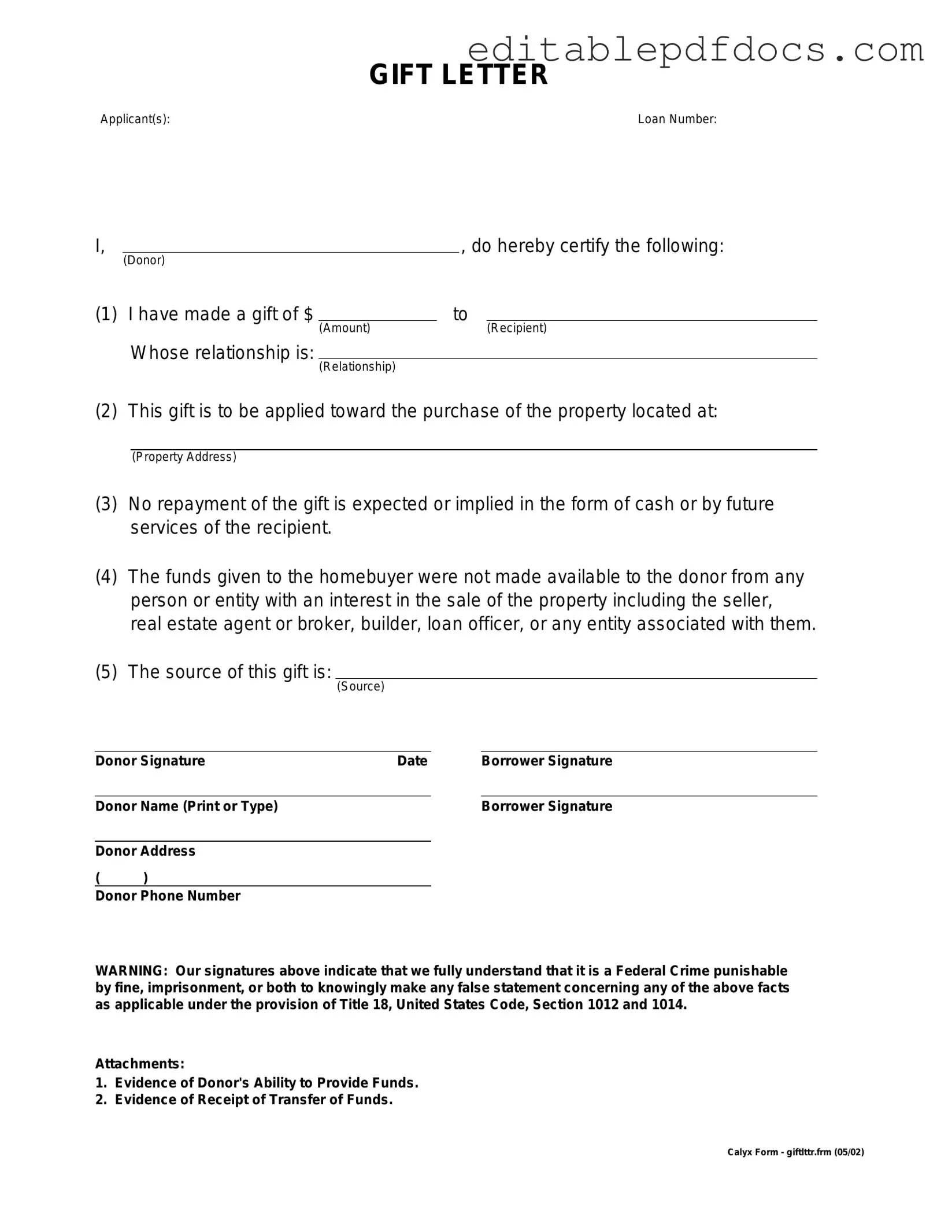When filling out a Gift Letter form, it is crucial to provide accurate and complete information. One common mistake is failing to include the donor's full name and address. This information is essential for verifying the legitimacy of the gift. Without it, the recipient may face complications during the financial review process.
Another frequent error is neglecting to specify the relationship between the donor and the recipient. Lenders often require this information to assess whether the gift is appropriate and to avoid potential conflicts of interest. Omitting this detail can lead to delays or even rejection of the application.
Many individuals also forget to indicate the amount of the gift clearly. This figure should be precise and match any supporting documents. Inaccuracies can raise red flags, prompting further scrutiny from financial institutions.
Some people mistakenly use vague language when describing the purpose of the gift. It's important to be straightforward. Clearly stating that the funds are intended for a specific purpose, such as a home purchase, helps ensure that the gift is understood correctly.
Another pitfall is failing to sign and date the form. A signature is a crucial element that confirms the donor’s intent. Without it, the document may be deemed invalid, leading to unnecessary complications.
Individuals sometimes overlook the need for additional documentation. Providing bank statements or proof of funds can strengthen the legitimacy of the gift. If this information is missing, it may raise concerns during the review process.
Some people make the mistake of not keeping a copy of the completed Gift Letter form. Retaining a copy is important for personal records and can be useful if questions arise later.
Additionally, errors in the donor's contact information can cause significant delays. Ensure that phone numbers and email addresses are accurate. This allows lenders to reach the donor easily if needed.
Finally, not reviewing the completed form before submission is a common oversight. Taking the time to double-check for errors can prevent issues down the line. A careful review helps ensure that all information is correct and complete.
